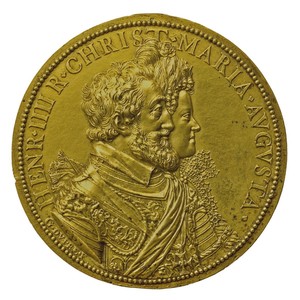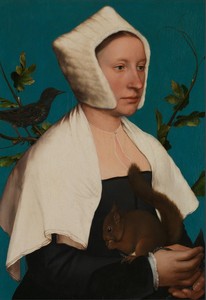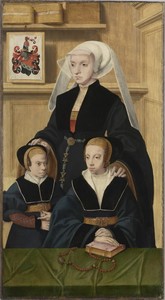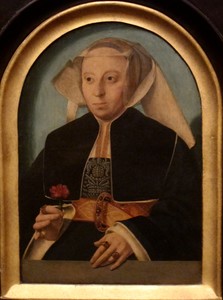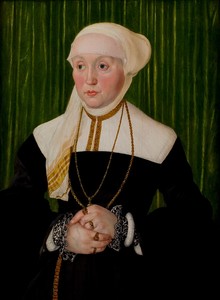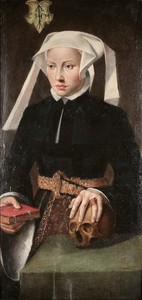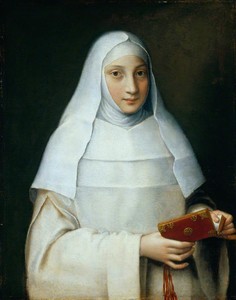South Netherlandish school, circa 1580
Portrait of a lady, three-quarter length, wearing a yellow and black embroidered dress, gold chains, and carrying gloves
Oil on panel : 30,3 X 24 cm
Unsigned
Sold at Sotheby’s London, 8/07/21
For 27.720 £
This portrait was in the past attributed to the workshop of Pourbus I
This is a comparative item
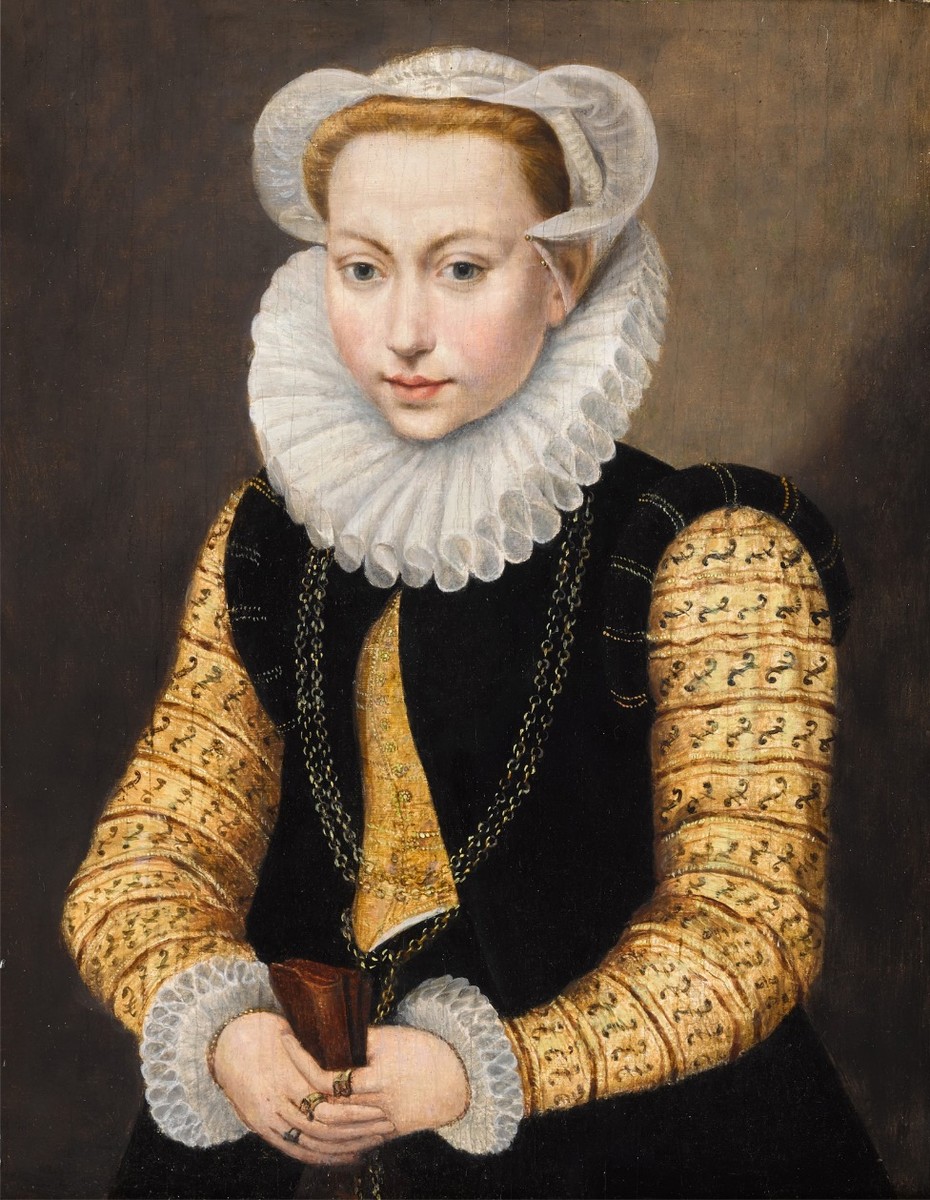
Painting for Sale
About our painting
This mysterious portrait of a young woman is very interesting, because it holds several contradictory elements, going from sober to very rich.
It represents a rather shy young woman with a black dress and a very simple ruff. Judging by her ring and two enamelled bracelets she must be married. She is holding a twig of rosemary, symbolic of loyalty and of remembrance. She wears an unusual, sharply angled, old-fashioned headdress that one sees in 16th century German and English portraits. It is fitted closely to her cheeks, in a way that nuns wore it.
But then her refined undergarment is elaborately and richly embroidered and she holds a delicate linen handkerchief. And above all there is this very heavy golden chain with a gilded portrait medal of King Henry IV of France and his second wife Queen Marie de’ Medici, clearly the chief element of this portrait. Was this a present, did she inherit it?
The inscriptions at the upper left are not original. They give the supposed age of the lady (24) and the supposed date of the portrait (1653). This portrait must be some fifty or forty years older, dating from the very start of the 17th century, as the medal dates from 1603. It was made by the French sculptor and medallist Guillaume Dupré (Sissonne, Aisne, around 1574 – 1643 Paris). That same year of 1603 Dupré was named Sculpteur Ordinaire du Roi. Through this title he was authorised to cast medals in gold and in silver. This explains the popularity of our medal. In 1611 he was made Premier Sculpteur du Roi.
The busts of the King and Queen are represented on the front side of the medal; the King wears a cuirass, the Queen a rich court dress. Along the edge of the medal one reads “HENR.IIII R.CHRIST.MARIA.AUGUSTA.”, standing for “Henri IV Rex Christianissimus” (“the most Christian king”), while “Maria Augusta” means “Empress Marie”. On the backside the King and Queen are represented as Roman gods, as Mars (God of War) and as Minerva (Goddess of Wisdom). Between them stands their small son, the future King Louis XIII. He is naked, tries to put on his father’s helmet and steps onto a dolphin (in French “le dauphin” has a double meaning: dolphin and heir to the throne). Above him an eagle brings him a crown. Henri IV (1553 – 1610) was King of France from 1589 until 1610. He married his second wife, Marie de’ Medici (1575 – 1642) in 1600. Their son, Louis XIII, was born the next year, in 1601.
As to the identity of our painter of this puzzling portrait I have no clue. Could he be French or might it well be a Flemish artist who was active in Paris?
Why should you buy this painting?
Because this very unusual portrait generates more questions than that it gives simple, tidy answers. Is that not what great art should stand for?
Comparative paintings
Click photos for more details

